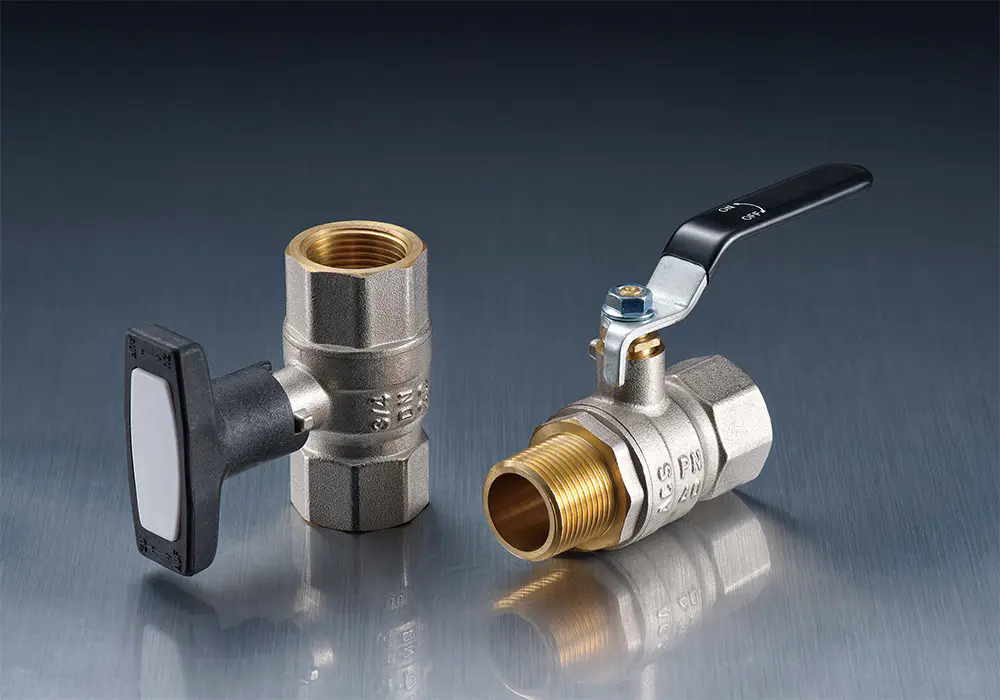2025-09-19
A brass strainer valve factory is an essential component used in a wide range of industrial and residential applications, particularly in fluid and gas control systems. This valve is designed to filter out debris, particles, and other impurities from the flow of liquids or gases, ensuring that the system operates efficiently and without obstruction. With its robust construction and ability to protect sensitive equipment, the brass strainer valve plays a crucial role in maintaining the performance and longevity of the entire system.

Key Features of Brass Strainer Valves
1. Durability and Corrosion Resistance
One of the key advantages of brass strainer valves is their durability and resistance to corrosion. Brass, an alloy composed primarily of copper and zinc, is known for its ability to withstand harsh environmental conditions. It resists corrosion, rust, and degradation caused by exposure to moisture and chemicals. This makes brass strainer valves an ideal choice for applications in systems that handle water, oil, and other liquids, especially in environments where corrosion can significantly impact the performance of the valve and surrounding equipment.
The corrosion resistance of brass ensures that the valve maintains its structural integrity over time, even in challenging conditions such as high humidity or exposure to chemicals. This durability extends the lifespan of the valve and reduces the need for frequent replacements, making it a cost-effective option in many industrial and residential applications.
2. Efficient Filtration
The primary function of a brass strainer valve is to filter out debris, dirt, and particles from the fluid or gas flowing through the system. These valves are equipped with a mesh strainer that captures unwanted particles before they enter the system’s pipeline or components. The mesh size can be customized to suit the specific requirements of the application, ensuring that the filter removes particles of a certain size.
The efficient filtration provided by brass strainer valves is essential in preventing damage to downstream equipment, such as pumps, compressors, and other sensitive machinery. By keeping the system free from debris, the valve helps maintain smooth operation, improves system efficiency, and reduces the likelihood of costly repairs or downtime.
3. Easy Maintenance
Another important feature of brass strainer valves is their ease of maintenance. These valves are designed with user convenience in mind, allowing for quick and straightforward cleaning and maintenance. The mesh strainer can be easily removed for cleaning or replacement, and the valve itself can be serviced without disassembling the entire system.
Regular maintenance of the strainer valve is important to ensure it continues to operate effectively. While the valve is durable, buildup of debris or particles over time can clog the strainer, reducing its efficiency. Easy access to the strainer for cleaning or replacing ensures that the system remains functional and the valve continues to perform at its better.
4. Versatility in Applications
Brass strainer valves are versatile components that can be used in a variety of applications. They are commonly found in water supply systems, heating systems, HVAC systems, industrial fluid systems, and gas pipelines. The ability to filter different types of fluids, from water to oil to gas, makes brass strainer valves suitable for a broad range of industries, including manufacturing, automotive, plumbing, and energy.
The compact design of the brass strainer valve allows it to be easily incorporated into systems of varying sizes. Whether used in large industrial systems or small residential setups, these valves are adaptable and can be tailored to meet the specific needs of the application.
5. Temperature and Pressure Resistance
Brass strainer valves are capable of withstanding a wide range of temperatures and pressures. Brass itself is known for its ability to perform well in both high and low-temperature environments, making it suitable for use in systems that handle hot water, steam, or other high-temperature fluids. Additionally, brass strainer valves can handle moderate to high-pressure systems without compromising performance, making them a reliable choice for many types of fluid control systems.
This resistance to temperatures and pressures ensures that the valve remains functional in a variety of environments, from residential heating systems to industrial machinery that requires precise fluid control.
Precautions When Using Brass Strainer Valves
1. Proper Sizing and Selection
To ensure the performance of a brass strainer valve, it is essential to select the correct size and type for the specific application. Using a valve that is too small can result in insufficient filtration, while a valve that is too large may not fit properly within the system, leaks or other issues. It’s important to consider the flow rate, pressure, and type of fluid being filtered when selecting a brass strainer valve.
Consulting with a professional or referring to manufacturer guidelines can help ensure that the valve is appropriately sized and selected for the system’s needs.
2. Avoiding Over-Pressurization
While brass strainer valves are designed to withstand high pressures, over-pressurization can still valve failure or damage. It is crucial to operate the system within the recommended pressure limits to prevent undue stress on the valve. Excessive pressure can cause the valve to deform or the strainer mesh to become clogged faster, reducing the effectiveness of the filtration system.
Monitoring the pressure levels in the system and ensuring that they stay within the manufacturer’s recommended range can help maintain the valve’s performance and extend its lifespan.